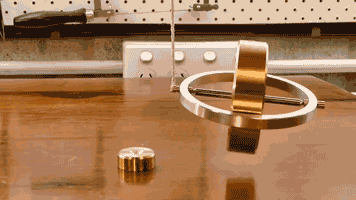Hi I'm Chris, and I make home machine shop project videos for my YouTube channel Clickspring. I have a passion for making useful things with my benchtop lathe and mill, and I hope that the projects I share with you will inspire you to make some cool things in your shop too.
View more articles by Chris from ClickspringIn this concluding episode of the gyroscope build, I show you how to finish off the remaining parts, and then put it all together for a run. One of the interesting aspects about this gyroscope design is the way it uses a simple cone bearing to support the rotation of the flywheel. This may come as a surprise to many, given that we live in a world dominated by the standard roller bearing.
But there are many advantages to cone bearings that make them particularly well suited to this sort of application. For one thing they are very easy to make (as you will find yourself!), and so are somewhat of a cheaper alternative to a roller bearing in a production environment. In fact, during the mid to late 20th century, cone bearings were often found in the cheaper alarm clocks and watches for this very reason.

They are also very tolerant of axial misalignment, and so can accept a fair degree of error in the assembly stage, as well as accommodate a lot of flex in the working gyroscope.
Add to this the fact that they have remarkably low friction, and they really are a natural choice for this sort of application. The threaded design also permits quite a fine adjustment of the “end shake” to further reduce the friction. I should mention though, that standard roller bearings of an appropriate size can certainly be substituted if desired, however more care will be required during installation in order to ensure free running.
The down side of a cone bearing is that they will eventually wear, and this is even more the case when it is made from brass. I wanted to keep the project as straightforward as possible, so I have not specified any hardening procedures, and for an application such as this the bearing life will certainly be adequate. However if you feel confident in quench hardening steel, you could substitute a high carbon steel for brass in the bearing and reasonably expect the bearing life to be extended by a factor of 20.
I hope you enjoy this gyroscope project as much as I did making it, and I look forward to hearing how you go building it!
P.S. As an interesting aside, the world’s first caged roller bearing was invented by a famous clockmaker by the name of John Harrison. He was the man who invented the first marine chronometer, and so solved the then insoluble problem of determining longitude for navigation.
Hi I'm Chris, and I make home machine shop project videos for my YouTube channel Clickspring. I have a passion for making useful things with my benchtop lathe and mill, and I hope that the projects I share with you will inspire you to make some cool things in your shop too.
View more articles by Chris from ClickspringADVERTISEMENT






